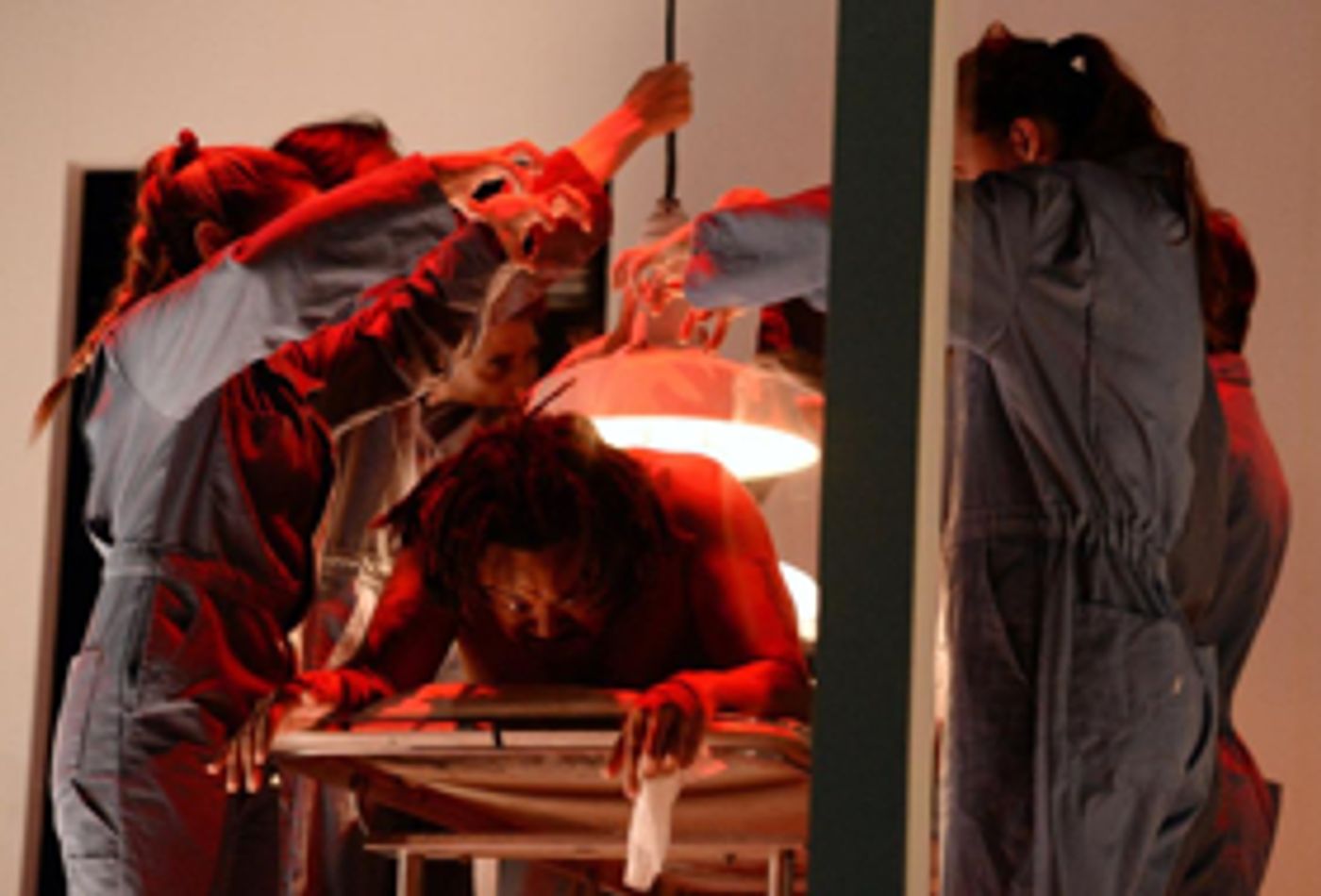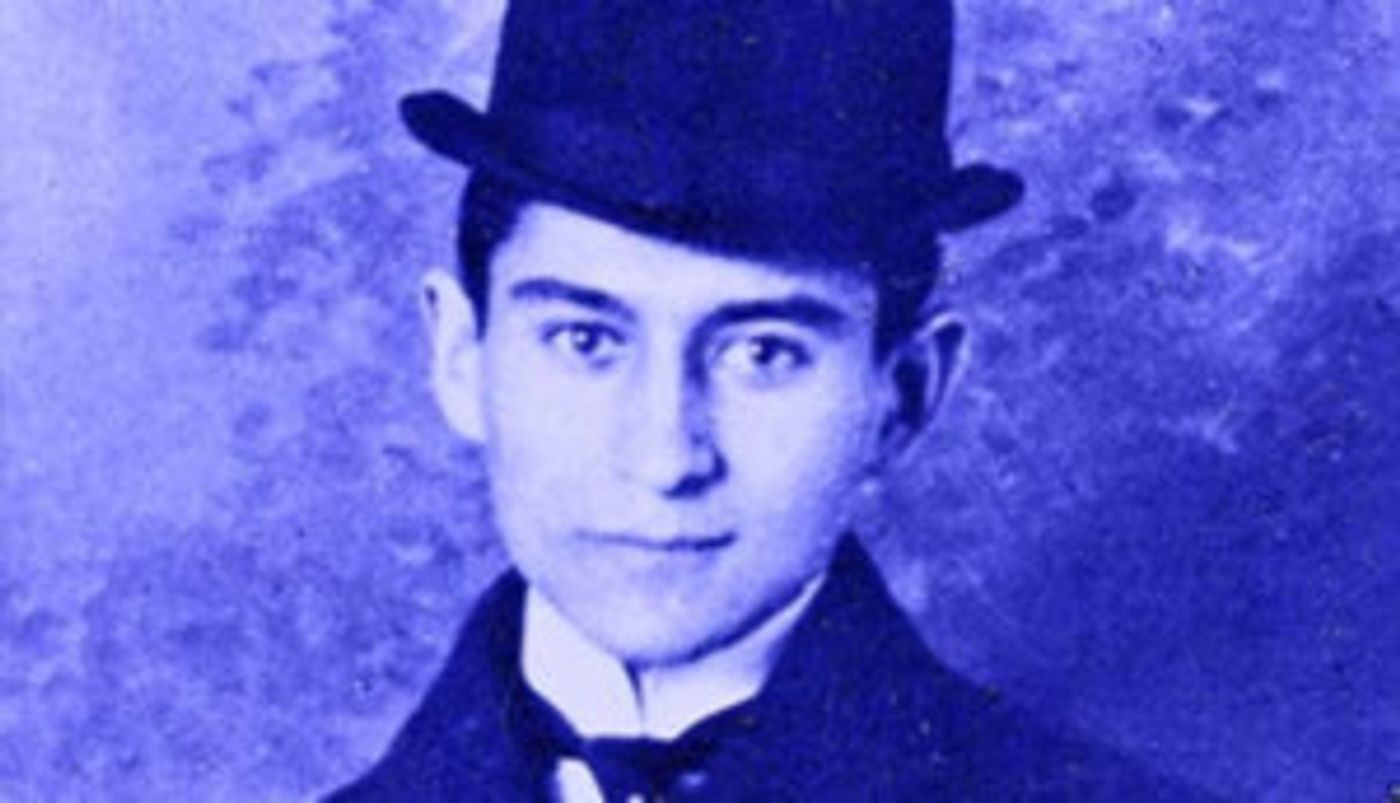Review: IN THE PENAL COLONY at Cal State U Long Beach STUDIO THEATER

 May 4, 2019: Long Beach Opera presented Philip Glass's IN THE PENAL COLONY at the Studio Theater of California State University in Long Beach (CSULB). Based on the story by Franz Kafka, the opera has words by Rudolph Wurlitzer and, in this production, added text by Juliette Carillo based on interviews with members of Rising Scholars. The latter is a CSULB group consisting of former inmates and family members of people who have served time.
May 4, 2019: Long Beach Opera presented Philip Glass's IN THE PENAL COLONY at the Studio Theater of California State University in Long Beach (CSULB). Based on the story by Franz Kafka, the opera has words by Rudolph Wurlitzer and, in this production, added text by Juliette Carillo based on interviews with members of Rising Scholars. The latter is a CSULB group consisting of former inmates and family members of people who have served time.
The Studio Theater is not very big and the closeness of the audience to the stage made for an intimate show. Kafka's writings have always had great impact on the reader and with the addition of Glass's emotionally charged, hypnotic music, no member of that audience could come away untouched. That was made clear at the "Talk Back" that ended the evening. Both veteran opera enthusiasts and first time opera goers spoke of the work's powerful effect on their emotions.
Glass wrote "What fascinates me in this story is the moral inversion that takes place. The Officer, having started as all-powerful, becomes the victim and he takes on the role with a kind of joy." The Visitor judges correctly but is too aloof to win the support of the audience, while the Officer becomes more likable when he sticks to his principles.
Danila Korogodsky's setting was a simple, glassed-in box with curtains that could be drawn or opened and a large overhead light. Vee Delgado's costumes consisted of a dark suit for the Officer, a soft brown top and loose pants for the Visitor, a dark outfit for the guard who also wore a face mask, and blue jumpsuits for the prisoners. Lily Bartenstein's video design helped tell the story by showing everything from the beauty of descending snow flakes to the prisoners' thoughts and their time away from the world. Martha Carter's lighting design underscored and magnified all of it.
Stage Director Jeff Janisheski and Conductor Andreas Mitisek added a spoken choral ensemble of prisoners consisting of CSULB California Repertory Company actors: Ariana Carter, Isidro Cortes, Mayra de Leon, Kimberly English, Madison Lewis, Matthew Limas, Mark Oliver, and John Pizzini. They interwove short but individualized tales into Wurlitzer and Glass's work that Janisheski and Mitisek accompanied by the expansion of instrumental passages. One prisoner recounted seeing snow for the first time while others noted their anger at being paid as little as 11 cents per hour for their labor. Although most of their performance was as an ensemble, the group and Morgan Pimentel, their officious Guard, engaged in considerable creative movement as they unwrapped their memorable prison characters.
The original opera's main characters are The Officer, played by baritone Zeffin Quinn Hollis, and The Visitor played by tenor Doug Jones. The Officer, who used to work for the former commandant of the prison, has a fascination with the latter's killing machine. It offers hours of horrific torture and punishment for a specific crime before death. The Visitor, who is from another culture, disapproves of the execution procedure but chooses not to engage directly with the executioner.
Tenor and baritone sang and crossed verbal swords with few pauses during the 90-minute work. Both voices rang out with burnished tones, although Hollis's baritone had the larger, more mellifluous sound. Both proved to be consummate actors who understated their reactions to the terrifying torture produced by a specially-made harrow.
IN THE PENAL COLONY is a chamber opera and as such its accompaniment was played by a 5-instrument ensemble made up of violinists Robert Schumitsky and Madalyn Parnas Miller, violist Phillip Triggs; cellist Erin Breene; and bassist Brian Cassier. All of them played with panache.
For its 2018-2019 season Long Beach Opera's theme is justice. This opera and its rearrangement certainly tell us Americans a great deal about ourselves when we read that our country has 5% of the world's population and 25% of its prisoners. After the opera was over, Stage Director Jeff Janisheski and Artistic and General Director Andreas Mitisek who conducted this performance spoke with numerous remaining members of the audience about United States prisons and the status of inmates.
As Director Janisheski stated in the program, the goal of the production was "to listen to voices that are marginalized, stigmatized and silenced." Most certainly they did that and made every thinking member of the audience contemplate what might be possible in order to make our society more just for all its citizens. There are a few tickets available for each of the two remaining performances, tonight and tomorrow afternoon.
Photos of Franz Kafka and of the opera's Death Scene: Long Beach Opera
Reader Reviews
Videos

